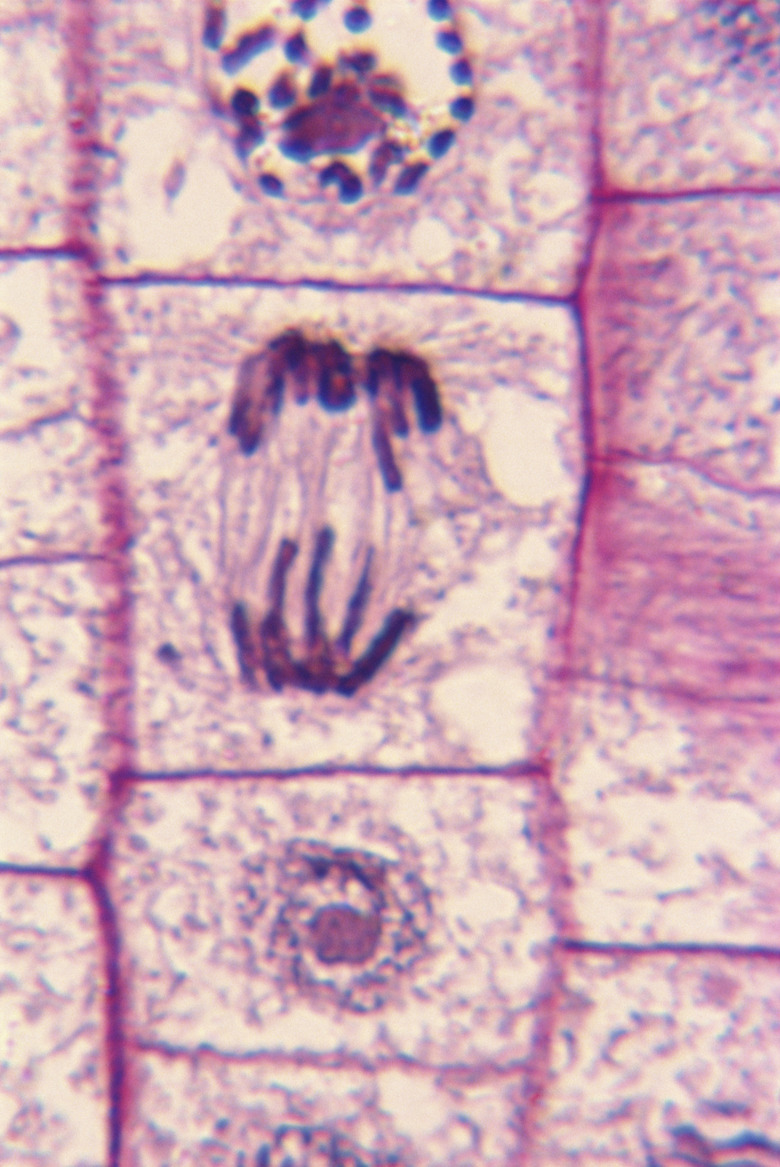How Is DNA Organized To Fit Into A Cell?
You've got about 50 trillion cells in your body. Almost all of them have DNA in them — two meters of it, in fact. If you strung all that DNA together end-to-end you'd have a string long enough to go around the Earth two-and-a-half million times. Yet somehow, that DNA gets packaged tightly enough to not only fit inside your body, but fit into the tiny nuclei of the cells that make up your body. Your body manages this the same way you would manage to organize a collection of ropes or a rainbow of yarn: it spools and loops the strands together.
The Structure of DNA
The Structure of DNA
A single molecule of DNA consists of a long chain of adenine, cytosine, guanine and thymine molecules linked together with sugar and phosphate groups. DNA molecules rarely exist on their own; they are usually paired in complementary strands wound around each other in the famous double helix configuration. Like two strands of thread, the double-stranded DNA provides a kind of chemical protection that makes the two together stronger than one by itself. That double-stranding is the first mechanism for packaging DNA in a tight package, reducing the two meters of length down to one.
Nucleosomes
Nucleosomes
If you had 50 yards of thread, you wouldn't want to just drop it in a heap. Instead, you'd get a spool and wrap the thread around it. That's the same thing your body does with DNA. It uses groups of molecules called histones as spools for DNA. The situation is a little more complicated than your spool of thread, though, because your body needs to be able to access different parts of your DNA at different times. So instead of a single large spool that would have to be unwrapped a lot to get to someplace in the middle, your body makes a lot of small spools, making one loop after another in your DNA. Those tiny loops of spooled DNA are called nucleosomes, and each chromosome has hundreds of thousands of them. The resulting structure is commonly called a "string of beads." This spooling reduces the length of DNA from about one meter to about 14 centimeters.
The 30-nm Fiber
The 30-nm Fiber
The next step in compacting DNA is not as well understood, even though the results are known. Somehow, the nucleosomes wind around each other, perhaps like petals on a daisy if each petal were a vertical nucleosome. Then the circular loops of nucleosomes spiral on top of each other. The result is a structure called the 30-nanometer fiber, because it's a string 30-billionths of a meter in diameter. That 30-nanometer fiber then loops upon itself, and the loops then loop on themselves again — now more like a skein of yarn than a spool of thread. That level of coiling is enough to fit the DNA into the cell nucleus.
Metaphase
Metaphase
When a cell divides, it splits into two perfect copies of itself. Those two perfect copies include two sets of DNA. To prepare for duplication, the chromosomes are condensed even further, lining up in a cellular life stage called metaphase. In metaphase, the DNA has so many loops upon loops that it is compressed into a length one-ten thousandth of its original length. Those compressed forms were the first form of DNA discovered.
Cite This Article
MLA
Gaughan, Richard. "How Is DNA Organized To Fit Into A Cell?" sciencing.com, https://www.sciencing.com/dna-organized-fit-cell-4323/. 24 April 2017.
APA
Gaughan, Richard. (2017, April 24). How Is DNA Organized To Fit Into A Cell?. sciencing.com. Retrieved from https://www.sciencing.com/dna-organized-fit-cell-4323/
Chicago
Gaughan, Richard. How Is DNA Organized To Fit Into A Cell? last modified March 24, 2022. https://www.sciencing.com/dna-organized-fit-cell-4323/
